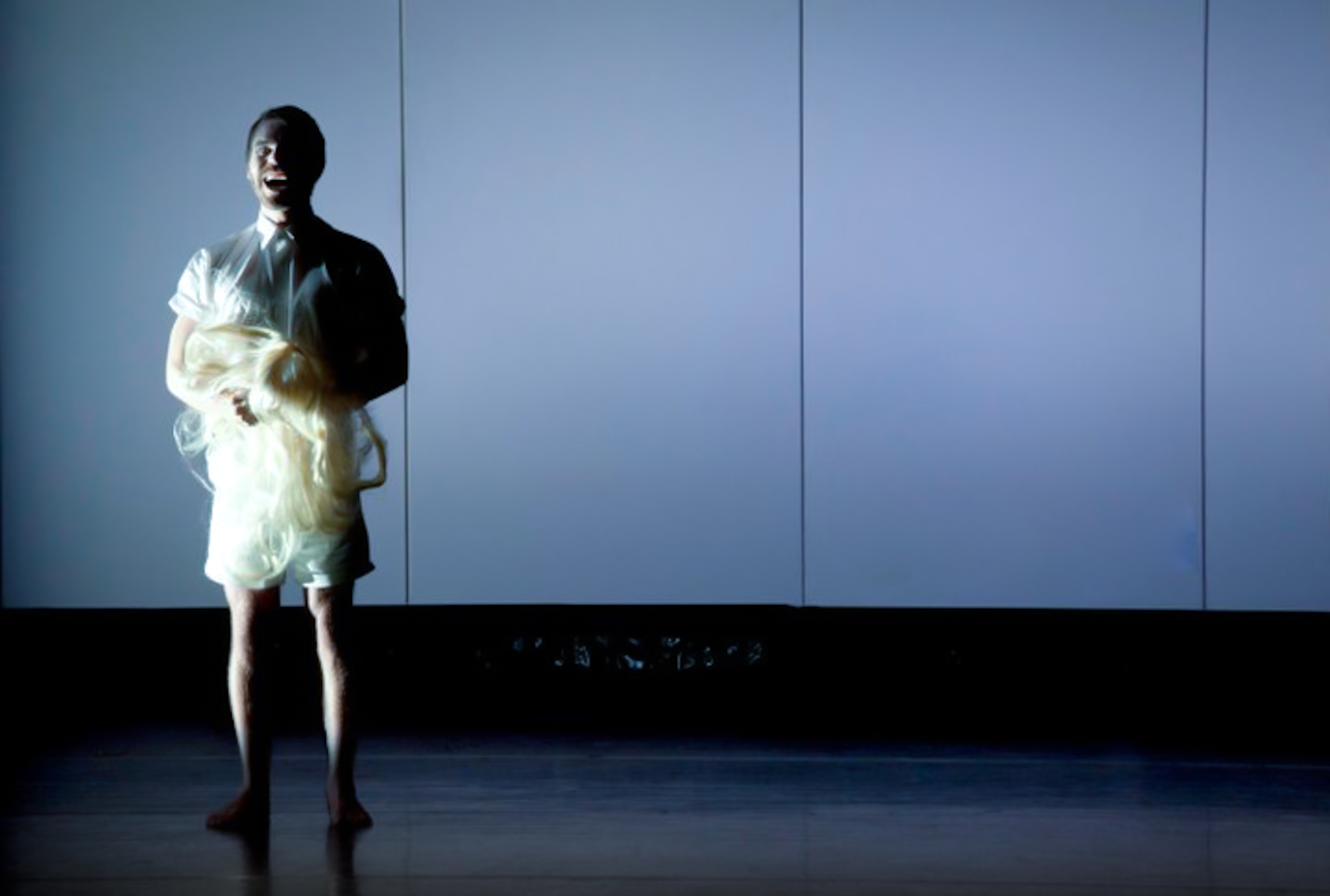
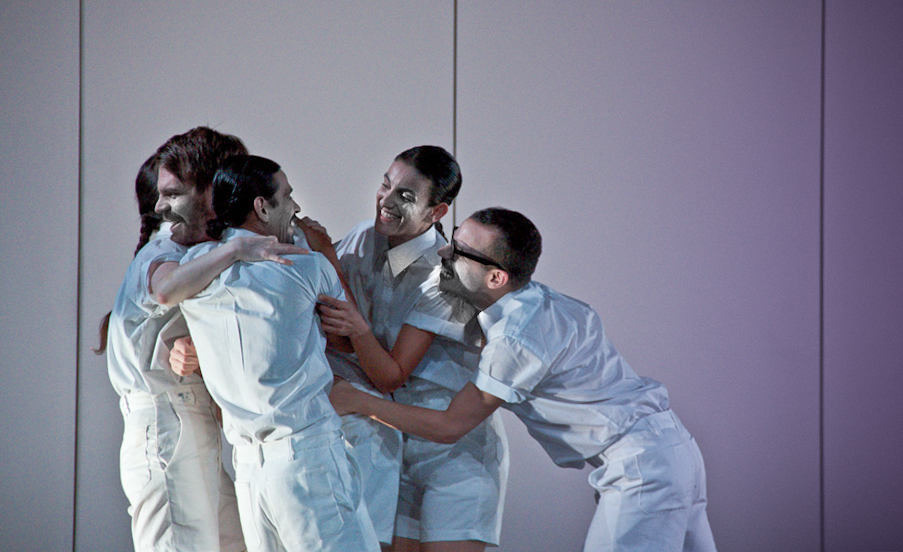
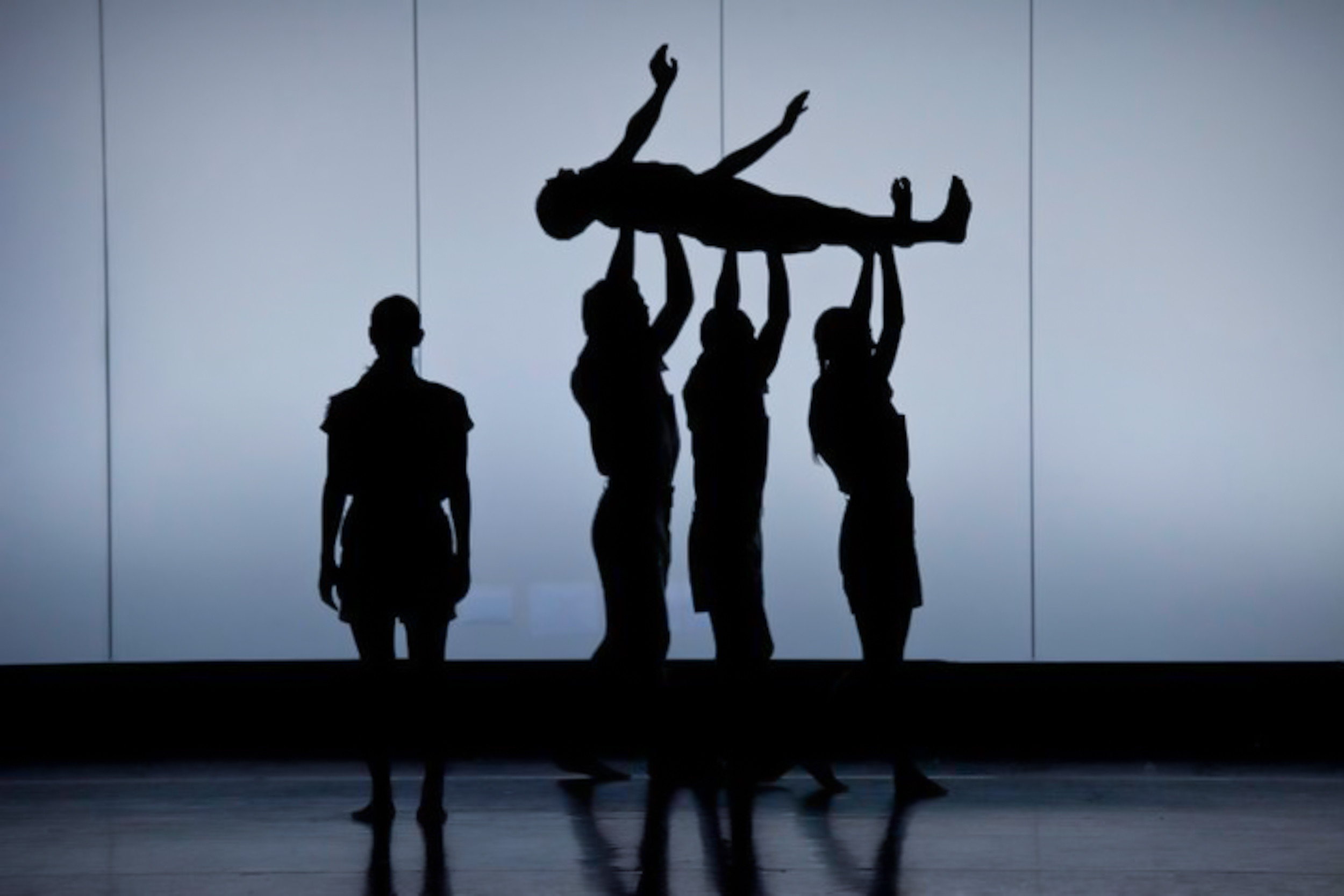
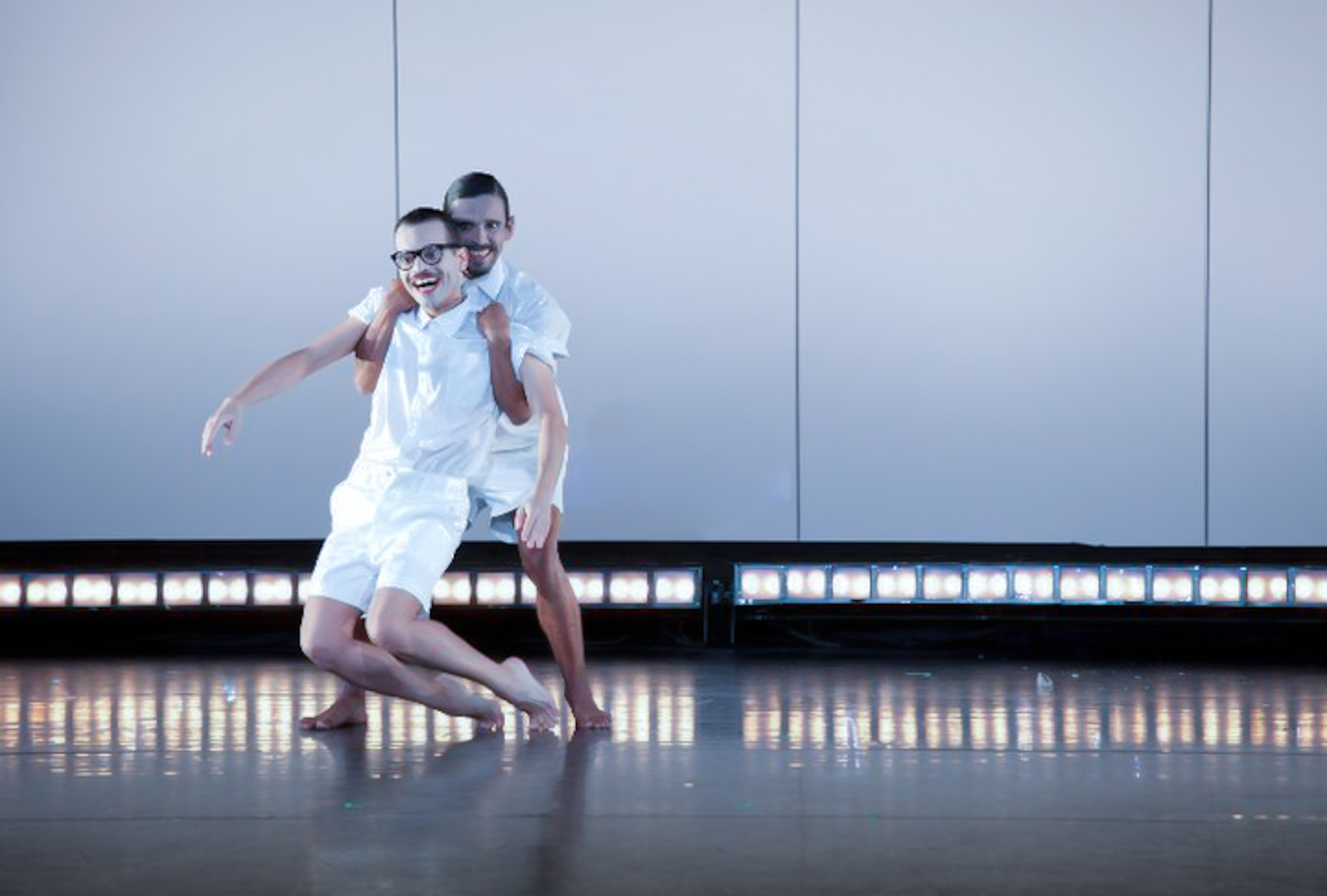
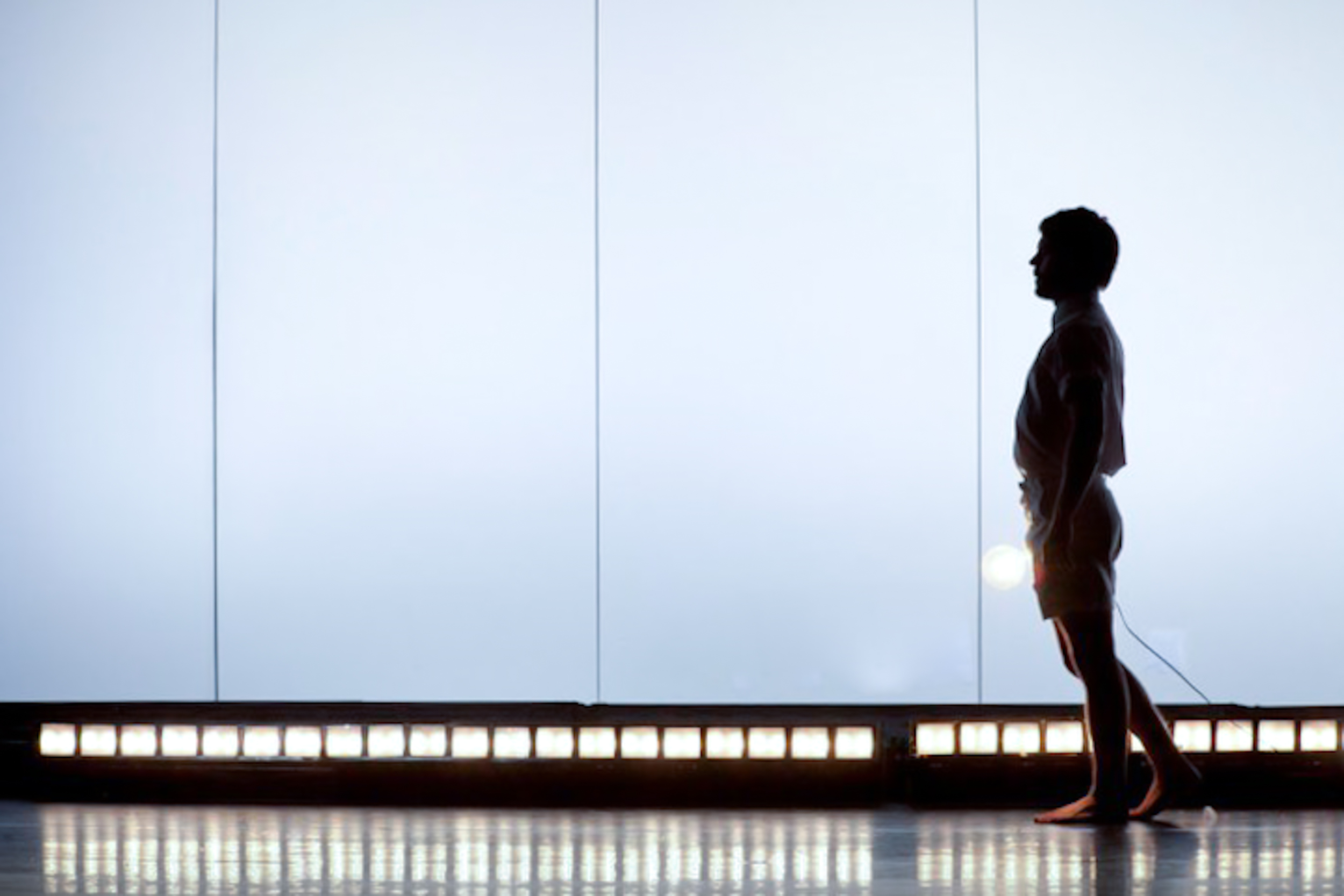
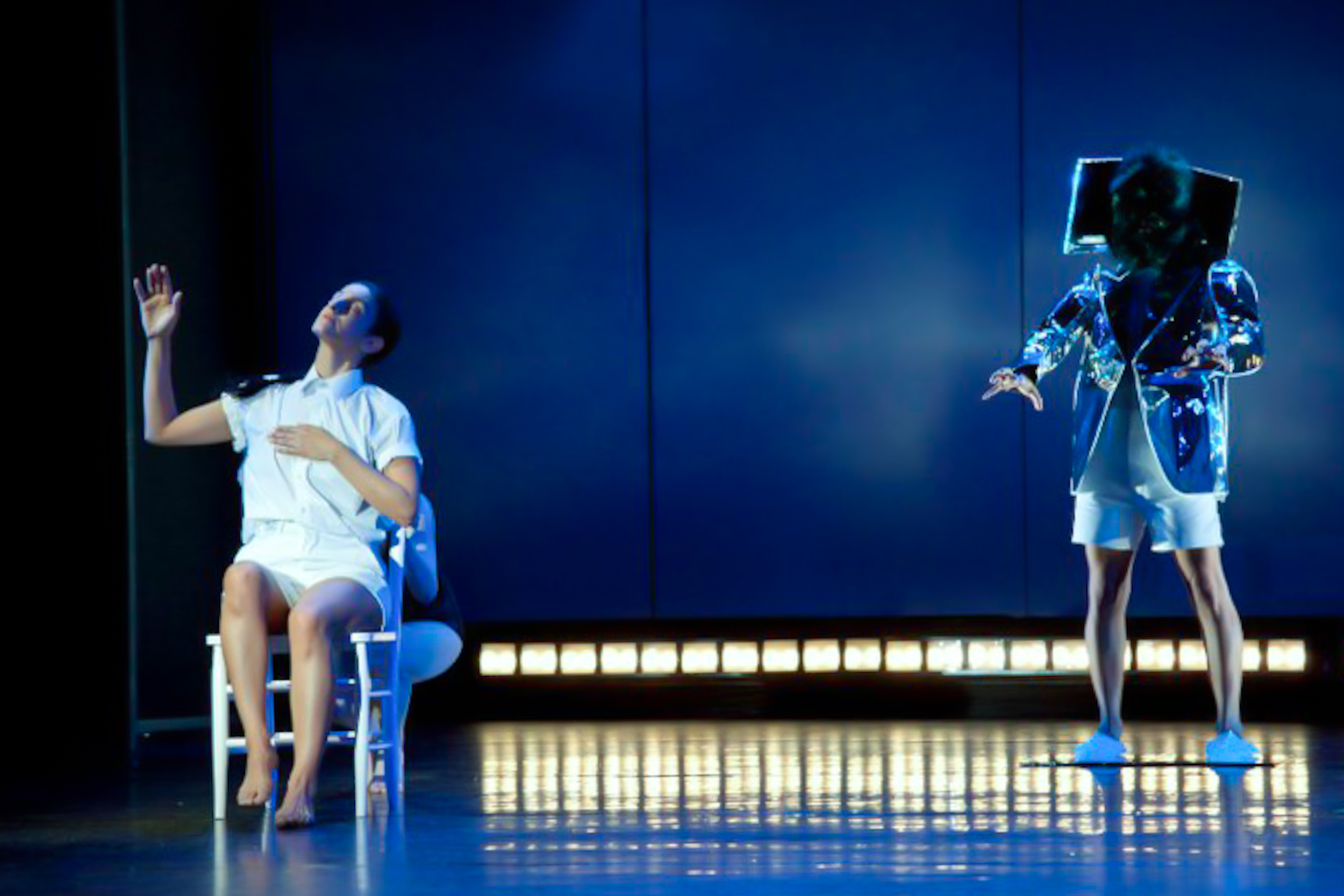

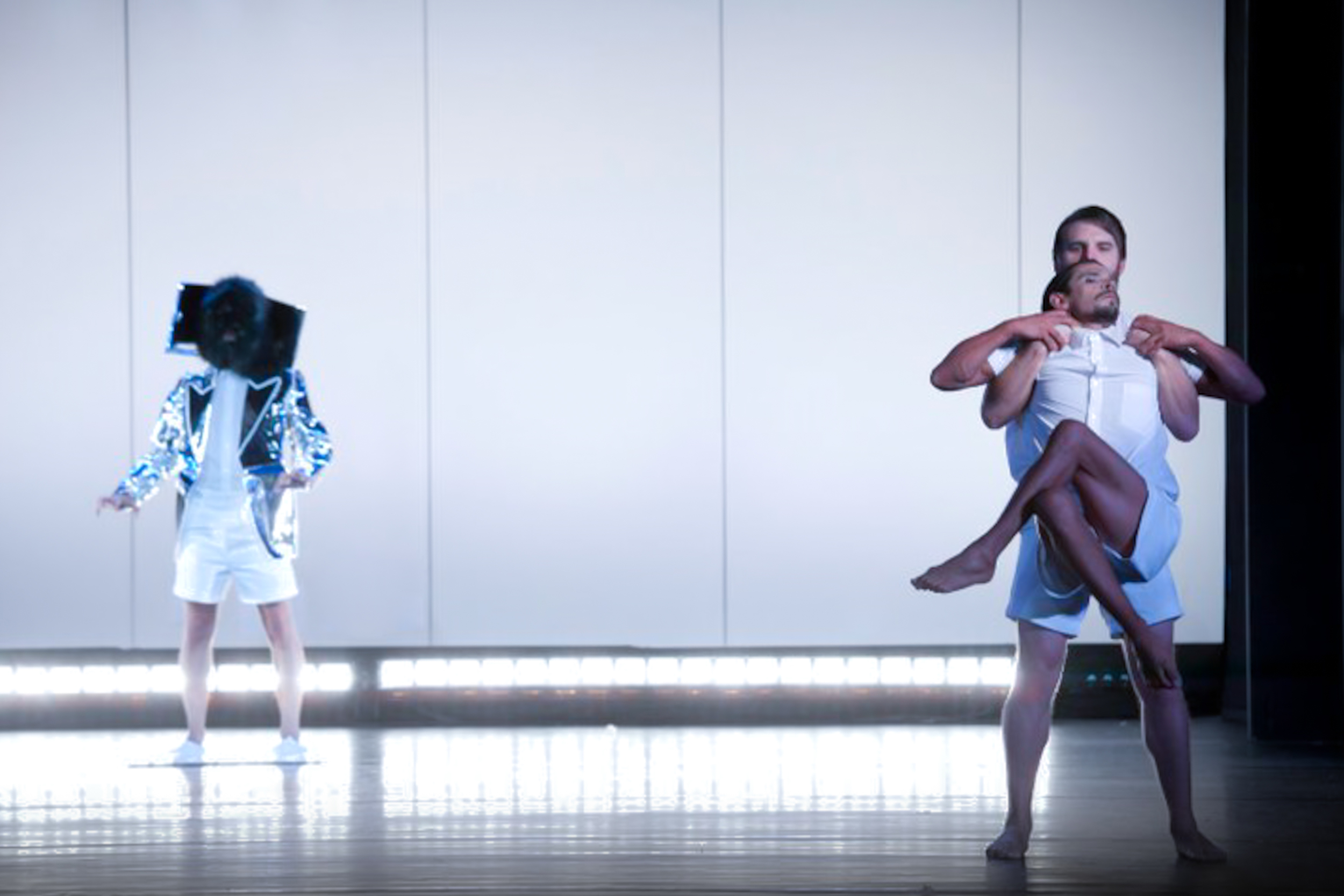


Guggenheim Museum / Works & Process, 2011
with Nixon Beltran, Andrew Gilchrist, Marianna Kavallieratos, Lynsey Peisinger
Carlos Soto
music Michael Galasso
texts Ezra Pound reads Canto II, David Wojnarowicz
movement coach Makram Hamdan
associate designer Mariano Marquez
lighting design Robert Wilson & John Torres

Taking its title from an incantatory phrase inscribed by the transvestite Divine onto a prison-cell wall in Jean Genet’s Notre-Dame-des-Fleurs (1943), the performance concerns itself with Ecstasy—with moments best defined by Michel Leiris in The Mirror of Tauromachy as:
a crossroads, an intersection of lines, a bifurcation of trajectories, a hub or wasteland where all comers meet – [...] defined as being 'the tangential point[s] between zero and infinity', so there are, among the countless facts that go to form our universe, different nodes or critical points that might be geometrically depicted as places in which we feel tangential to the world and to ourselves.
Therefore, ecstasy in its most literal sense: to stand outside oneself, to be removed to elsewhere. Ecstasy here radiates of the spiritual and sexual union of God with the saints, of states of oblivion glimpsed in the shade of artificial paradises, of the hypostatic union of man and god/beast*, and the exalting smoke of sorrow and loss. Here beasts are engendered by tangled bodies in constantly shifting shadow and light.

Commissioned by the Guggenheim Museum / Works & Process and presented in an evening of works by Andrew Ondrejcak, Derrick Ryan Claud Mitchell, Jason Akira Somma and Marianna Kavallieratos; curated by American director Robert Wilson.